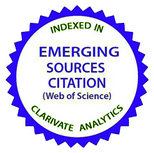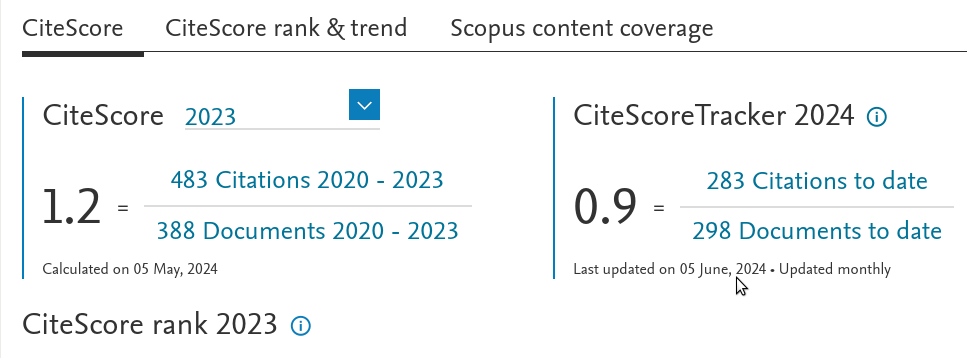Статистичне описання нерівноважних багаточастинкових систем
DOI:
https://doi.org/10.15407/ujpe65.12.1056Ключові слова:
нерiвноважний статистичний оператор, багаточастинковi системи, стацiонарнi станиАнотація
Системи частинок, що взаємодiють, в багатьох випадках є нерiвноважними. В даному оглядi представлено новий пiдхiд, заснований на застосуваннi нерiвноважного статистичного оператора, який дає змогу врахувати неоднорiдний розподiл частинок i
температури. Такий метод використовує процедуру сiдлової точки для знаходження основних внескiв у статистичну суму i надає можливостi отримати всi термодинамiчнi параметри систем. Передбачено можливi особливостi поведiнки взаємодiйних систем, таких як ґравiтiвнi системи, системи з кулонiвським вiдштовхуванням тощо для рiзних термодинамiчних умов. Запропоновано новий пiдхiд для описування нерiвноважних систем в енергетичному просторi, що є розширенням пiдходу Гiбса для
макроскопiчних систем за нерiвноважних умов. Цей пiдхiд уможливлює описати стацiонарнi стани нерiвноважних систем та їхню динамiку.
Посилання
W. Thirring. Systems with negative specific heat. Z. Phys. 235, 339 (1970). https://doi.org/10.1007/BF01403177
P.-H. Chavanis, C. Rosier, C. Sire. Thermodynamics of self-gravitating systems. Phys. Rev. E 66, 036105 (2002). https://doi.org/10.1103/PhysRevE.66.036105
D.N. Zubarev. Non-Equilibrium Statistical Thermodynamics (Consultants Bureau, 1974). https://doi.org/10.21236/AD0784411
V. Laliena. On the thermodynamical limit of self-gravitating systems. Nucl. Phys. B 668, 403 (2003). https://doi.org/10.1016/j.nuclphysb.2003.07.005
R. Pakter, B. Marcos, Y. Levin. Symmetry breaking in d-dimensional self-gravitating systems. Phys. Rev. Lett. 111, 230603 (2013). https://doi.org/10.1103/PhysRevLett.111.230603
F.P.C. Benetti, A.C. Ribeiro-Teixeira, R. Pakter, Y. Levin. Nonequilibrium stationary states of 3D self-gravitating systems. Phys. Rev. Lett. 113, 100602 (2014). https://doi.org/10.1103/PhysRevLett.113.100602
R. Baxter. Exactly Solved Models in Statistical Mechanics (Academic Press, 1980).
D. Ruelle. Statistical Mechanics (Rigorous Results) (Benjamin, 1969).
Y.D. Bilotsky, B.I. Lev. Clustering in condensed media. Teor. Mat. Fiz. 60, 711 (1984) (in Russian). https://doi.org/10.1007/BF01018256
B.I. Lev, A.Ya. Zhugaevych. Statistical description of model systems of interacting particles and phase transitions accompanied by cluster formation. Phys. Rev. E. 57, 6460 (1998). https://doi.org/10.1103/PhysRevE.57.6460
B.I. Lev. Nonequilibrium self-gravitating system. Int. J. Mod. Phys. B 25, 2237 (2011). https://doi.org/10.1142/S0217979211100771
H. Kleinert. Gauge Field in Condensed Matter (Word Scientific, 1989). https://doi.org/10.1142/0356
R.L. Stratonovich. On a method of calculating quantum distribution functions. Sov. Phys. Dokl. 2, 416 (1958).
J. Hubbard. Calculation of partition functions. Phys. Rev. Lett. 3, 77 (1958). https://doi.org/10.1103/PhysRevLett.3.77
K.V. Grigorishin, B.I. Lev. Cluster formation in the system of interacting Bose particles. Phys. Rev. E 71, 066105 (2005). https://doi.org/10.1103/PhysRevE.71.066105
T. Padmanabhan. Statistical mechanics of gravitating system. Phys. Rep. 188, 285 (1990). https://doi.org/10.1016/0370-1573(90)90051-3
P.-H. Chavanis. Phase transitions in self-gravitating systems.Int. J. Mod. Phys. B 20, 3113 (2006). https://doi.org/10.1142/S0217979206035400
S. Chandrasekhar. An Introduction to the Study of Stellar Structure (Dover, 1942).
C. Sire, P.-H. Chavanis. Thermodynamics and collapse of self-gravitating Brownian particles in D dimensions. Phys. Rev. E 66, 046133 (2002). https://doi.org/10.1103/PhysRevE.66.046133
E.B. Aronson, C.J. Hansen. Thermal equilibrium states of a classical system with gravitation. Astrophys. J. 117, 145 (1972). https://doi.org/10.1086/151693
K. Huang. Statistical Mechanics (Wiley, 1963) [ISBN: 978-0-471-81518-1].
A. Isihara. Statistical Physics (Academic Press, 1971).
S. Shaikh, A. Khan. Instability of thermally conducting self-gravitating systems. J. Mod. Phys. 1, 77 (2010). https://doi.org/10.4236/jmp.2010.110010
B.I. Lev. Brownian system in energy space. Eur. Phys. J. Spec. Topics 216, 37 (2013). https://doi.org/10.1140/epjst/e2013-01727-1
H.-J. de Vega, N. S'anchez. The statistical mechanics of the self-gravitating gas: equation of state and fractal dimension. Phys. Lett. B 490, 180 (2000). https://doi.org/10.1016/S0370-2693(00)00973-4
H.-J. de Vega, N. S'anchez. Statistical mechanics of the self-gravitating gas: I. Thermodynamic limit and phase diagrams. Nucl. Phys. B 625, 409 (2002). https://doi.org/10.1016/S0550-3213(02)00025-1
H.-J. de Vega, N. S'anchez. Statistical mechanics of the self-gravitating gas: II. Local physical magnitudes and fractal structures. Nucl. Phys. B 625, 460 (2002). https://doi.org/10.1016/S0550-3213(02)00026-3
W.C. Saslow. Gravitational Physics of Stellar and Galactic Systems (Cambridge Univ. Press, 1987).
D. Lynden-Bell, R. Wood. The gravo-thermal catastrophe in isothermal spheres and the onset of red-giant structure for stellar systems. Mon. Not. R. Astron. Soc. 138, 495 (1968). https://doi.org/10.1093/mnras/138.4.495
H.J. de Vega, N. S'anchez, F. Combes. Fractal dimensions and scaling laws in the interstellar medium: A new field theory approach. Phys. Rev. D 54, 6008 (1996). https://doi.org/10.1103/PhysRevD.54.6008
J.A.S. Lima, R. Silva, J. Santos. Jeans' gravitational instability and nonextensive kinetic theory. Astron. Astrophys. 396, 309 (2002). https://doi.org/10.1051/0004-6361:20021395
A.P. Boss. Giant planet formation by gravitational instability. Science 276, 1836 (1997). https://doi.org/10.1126/science.276.5320.1836
S.M. Fall. Gravitational instability theory of galaxy formation and clustering: Some recent developments. Ann. NY Acad. Sci. 336, 172 (2006). https://doi.org/10.1111/j.1749-6632.1980.tb15928.x
H. Kleinert. Collective quantum fields. Fortschr. Phys. 26, 565 (1979). https://doi.org/10.1002/prop.19780261102
L.N. Lipatov. Divergence of the perturbation-theory series and the quasi-classical theory. JETP (Sov) 72, 412 (1977).
S. Edward, A. Lenard. Exact statistical mechanics of a one-dimensional system with Coulomb forces. II. The method of functional integration. J. Math. Phys. 3, 778 (1962). https://doi.org/10.1063/1.1724281
B.I. Lev, A.G. Zagorodny. Statistical description of Coulomb-like systems. Phys. Rev. E 84, 061115 (2011). https://doi.org/10.1103/PhysRevE.84.061115
B.I. Lev. Statistical induced dynamic of self-gravitating system. J. Mod. Phys. 10, 687 (2019). https://doi.org/10.4236/jmp.2019.107049
B.I. Lev. Statistical derivation of the fundamental scalar field. J. Mod. Phys. 9, 2223 (2018). https://doi.org/10.4236/jmp.2018.912140
B.I. Lev, S.B. Lev. Statistical description of nonequilibrium self-gravitating systems. Eur. Phys. J. B 9, 3 (2017).
S. Samuel. Grand partition function in field theory with applications to sine-Gordon field theory. Phys. Rev. D 18, 1916 (1978). https://doi.org/10.1103/PhysRevD.18.1916
A.D. Linde. Elementary Particle Physics and Inflationary Cosmology (Harwood Academic, 1990). https://doi.org/10.1201/9780367807788
A.D. Linde. Phase transitions in gauge theories and cosmology. Rep. Prog. Phys. 42, 389 (1979). https://doi.org/10.1088/0034-4885/42/3/001
S. Coleman. Fate of the false vacuum: Semiclassical theory. Phys. Rev. D 15, 2929 (1977); 16, 1762 (1977). https://doi.org/10.1103/PhysRevD.15.2929
G. Rybicki. Exact statistical mechanics of a one-dimensional self-gravitating system. Astrophys. Space Sci. 14, 56 (1971). https://doi.org/10.1007/BF00649195
K.R. Yawn, B.N. Miller. Incomplete relaxation in a two-mass one-dimensional self-gravitating system. Phys. Rev. E 68, 056120 (2003). https://doi.org/10.1103/PhysRevE.68.056120
R.Michie. On the distribution of high energy stars in spherical stellar systems. Not. R. Astron. Soc. 125, 127 (1962). https://doi.org/10.1093/mnras/125.2.127
W. Jaffe. A simple model for the distribution of light in spherical galaxies. Not. R. Astron. Soc. 202, 995 (1983). https://doi.org/10.1093/mnras/202.4.995
Y. Levin, R. Pakter, F.B. Rizzato, T.N. Teles, F.P.C. Benetti. Nonequilibrium statistical mechanics of systems with long-range interactions. Phys. Rep. 535, 1 (2014). https://doi.org/10.1016/j.physrep.2013.10.001
J.W. Cahn. On spinodal decomposition. Acta Metallurgica 9, 795 (1988). https://doi.org/10.1016/0001-6160(61)90182-1
C.W. Gardiner, P. Zoller. Quantum Noise (Springer, 2000) [ISBN: 978-3-540-22301-6]. https://doi.org/10.1007/978-3-662-04103-1
R. Balescu. Equilibrium and Nonequilibrium Statistical Mechanics (Wiley, 1978).
J.W. Gibbs. Elementary Principles in Statistical Mechanics, Developed with Especial Reference to the Rational Foundation of Thermodynamics (Scribner's Sons, 1902). https://doi.org/10.5962/bhl.title.32624
L.D. Landau, E.M. Lifshitz. Statistical Physics (Pergamon, 1978).
D.F. Wells, G.J. Milburn. Quantum Optics (Springer, 2001).
P. Colet, F. De Pasquele, M. San Miguel. Relaxation in the subcritical pitchfork bifurcation: From critical to Gaussian scaling. Phys. Rev. A 43, 5296 (1991). https://doi.org/10.1103/PhysRevA.43.5296
F.D.M. Haldane. "Fractional statistics" in arbitrary dimensions: A generalization of the Pauli principle. Phys. Rev. Lett. 67, 937 (1991). https://doi.org/10.1103/PhysRevLett.67.937
N.G. van Kampen. Stochastic Processes in Physics and Chemistry (North-Holland, 1990).
W. Horsthemke, R. Lefever. Noise-Induced Phase Transitions. Theory, Applications in Physics, Chemistry and Biology (Springer, 1984).
A. Albrecht, P.J. Steinhard. Cosmology for grand unified theories with radiatively induced symmetry breaking. Phys. Rev. Lett. 48, 1220 (1982). https://doi.org/10.1103/PhysRevLett.48.1220
B.I. Lev, H. Yokoyama. Selection of states and fluctuation under the first order phase transitions. Int. J. Mod. Phys. B 17, 4913 (2003). https://doi.org/10.1142/S021797920302274X
Downloads
Опубліковано
Як цитувати
Номер
Розділ
Ліцензія
Ліцензійний Договір
на використання Твору
м. Київ, Україна
Відповідальний автор та співавтори (надалі іменовані як Автор(и)) статті, яку він (вони) подають до Українського фізичного журналу, (надалі іменована як Твір) з одного боку та Інститут теоретичної фізики імені М.М. Боголюбова НАН України в особі директора (надалі – Видавець) з іншого боку уклали даний Договір про таке:
1. Предмет договору.
Автор(и) надає(ють) Видавцю безоплатно невиключні права на використання Твору (наукового, технічного або іншого характеру) на умовах, визначених цим Договором.
2. Способи використання Твору.
2.1. Автор(и) надає(ють) Видавцю право на використання Твору таким чином:
2.1.1. Використовувати Твір шляхом його видання в Українському фізичному журналі (далі – Видання) мовою оригіналу та в перекладі на англійську (погоджений Автором(ами) і Видавцем примірник Твору, прийнятого до друку, є невід’ємною частиною Ліцензійного договору).
2.1.2. Переробляти, адаптувати або іншим чином змінювати Твір за погодженням з Автором(ами).
2.1.3. Перекладати Твір у випадку, коли Твір викладений іншою мовою, ніж мова, якою передбачена публікація у Виданні.
2.2. Якщо Автор(и) виявить(лять) бажання використовувати Твір в інший спосіб, як то публікувати перекладену версію Твору (окрім випадку, зазначеного в п. 2.1.3 цього Договору); розміщувати повністю або частково в мережі Інтернет; публікувати Твір в інших, у тому числі іноземних, виданнях; включати Твір як складову частину інших збірників, антологій, енциклопедій тощо, то Автор(и) мають отримати на це письмовий дозвіл від Видавця.
3. Територія використання.
Автор(и) надає(ють) Видавцю право на використання Твору способами, зазначеними у п.п. 2.1.1–2.1.3 цього Договору, на території України, а також право на розповсюдження Твору як невід’ємної складової частини Видання на території України та інших країн шляхом передплати, продажу та безоплатної передачі третій стороні.
4. Строк, на який надаються права.
4.1. Договір є чинним з дати підписання та діє протягом усього часу функціонування Видання.
5. Застереження.
5.1. Автор(и) заявляє(ють), що:
– він/вона є автором (співавтором) Твору;
– авторські права на даний Твір не передані іншій стороні;
– даний Твір не був раніше опублікований і не буде опублікований у будь-якому іншому виданні до публікації його Видавцем (див. також п. 2.2);
– Автор(и) не порушив(ли) права інтелектуальної власності інших осіб. Якщо у Творі наведені матеріали інших осіб за виключенням випадків цитування в обсязі, виправданому науковим, інформаційним або критичним характером Твору, використання таких матеріалів здійснене Автором(ами) з дотриманням норм міжнародного законодавства і законодавства України.
6. Реквізити і підписи сторін.
Видавець: Інститут теоретичної фізики імені М.М. Боголюбова НАН України.
Адреса: м. Київ, вул. Метрологічна 14-б.
Автор: Електронний підпис від імені та за погодження всіх співавторів.

















